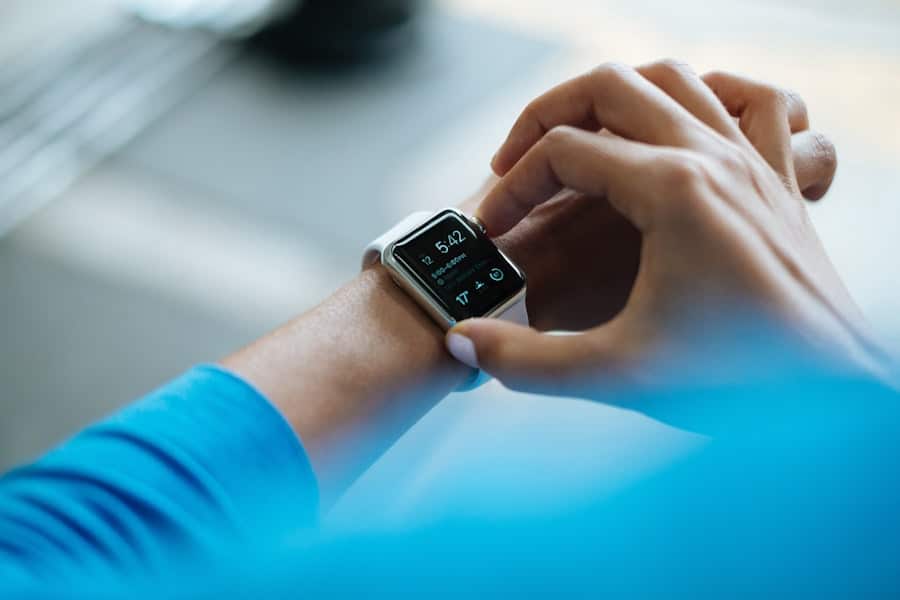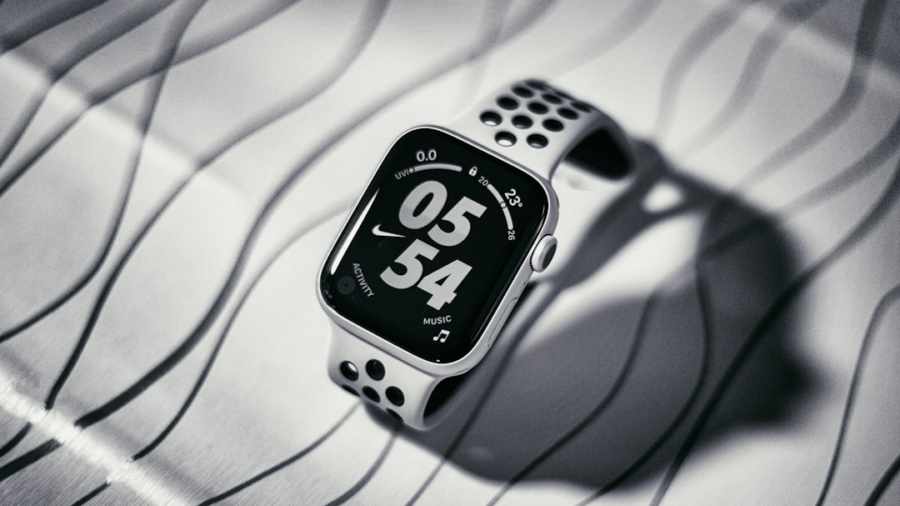The advent of wearable technology has revolutionized the way individuals approach fitness and health management. These devices, which can be worn on the body, are equipped with sensors and software that track various health metrics, providing users with real-time data about their physical activity, heart rate, sleep patterns, and more. The integration of technology into personal health monitoring has made it easier for people to set goals, monitor progress, and make informed decisions about their health.
As society becomes increasingly health-conscious, the demand for wearables has surged, leading to a diverse market filled with options tailored to different needs and preferences. Wearable devices have evolved significantly over the past decade. Initially, they were primarily focused on basic activity tracking, such as counting steps or measuring distance traveled.
However, advancements in technology have enabled these devices to incorporate sophisticated features like GPS tracking, heart rate monitoring, and even blood oxygen level measurement. This evolution reflects a broader trend in healthcare towards preventive measures and self-management, empowering users to take control of their health in ways that were previously unimaginable. As a result, wearables have become an essential tool for fitness enthusiasts, casual exercisers, and individuals seeking to improve their overall well-being.
Key Takeaways
- Wearables for fitness and health tracking are becoming increasingly popular for monitoring physical activity, sleep, and overall health.
- When comparing different wearable devices, consider factors such as design, battery life, accuracy, and compatibility with your smartphone or other devices.
- Features to consider when choosing a wearable for fitness and health tracking include heart rate monitoring, GPS tracking, sleep tracking, and water resistance.
- Popular wearable devices have pros such as convenience, motivation, and data tracking, but also cons such as cost, accuracy issues, and limited battery life.
- User experience and reviews of wearable devices can provide valuable insights into the performance, comfort, and reliability of the devices.
- Wearables play an important role in monitoring fitness and health by providing real-time data, encouraging physical activity, and promoting overall wellness.
- To get the most out of your wearable device, set achievable goals, track your progress, and use the device to stay motivated and accountable.
- In conclusion, recommendations for wearables for fitness and health tracking include choosing a device that meets your specific needs, considering user reviews, and utilizing the device to improve your overall well-being.
Comparison of Different Wearable Devices
The market for wearable devices is vast and varied, encompassing a range of products from fitness trackers to smartwatches. Fitness trackers are typically designed with a focus on activity monitoring, offering features such as step counting, calorie tracking, and sleep analysis. Brands like Fitbit and Garmin have established themselves as leaders in this category, providing devices that cater to both casual users and serious athletes.
For instance, the Fitbit Charge series offers comprehensive health metrics while maintaining a user-friendly interface, making it accessible for individuals at all fitness levels. On the other hand, smartwatches combine the functionality of fitness tracking with the capabilities of a smartphone. Devices like the Apple Watch and Samsung Galaxy Watch not only track physical activity but also allow users to receive notifications, respond to messages, and access various apps directly from their wrist.
This multifunctionality appeals to tech-savvy consumers who seek convenience alongside health monitoring. However, the trade-off often comes in battery life and size; smartwatches tend to require more frequent charging and can be bulkier than dedicated fitness trackers.
Features to Consider When Choosing a Wearable for Fitness and Health Tracking

When selecting a wearable device for fitness and health tracking, several key features should be taken into account to ensure it meets individual needs. One of the most critical aspects is the accuracy of the sensors used in the device. For example, heart rate monitors can vary significantly in precision depending on the technology employed—optical sensors may provide less accurate readings during high-intensity workouts compared to chest strap monitors.
Users should consider their primary activities and choose a device that excels in those areas. Another important feature is battery life. Some wearables can last several days on a single charge, while others may require daily recharging.
For individuals who engage in extended outdoor activities or travel frequently, a device with longer battery life can be a significant advantage. Additionally, compatibility with smartphones and other devices is crucial; many wearables sync with mobile apps to provide deeper insights into health data. Users should ensure that their chosen device is compatible with their smartphone’s operating system to maximize functionality.
Pros and Cons of Popular Wearable Devices
Each wearable device comes with its own set of advantages and disadvantages that can influence a user’s decision. For instance, the Apple Watch is renowned for its sleek design and extensive app ecosystem, making it a favorite among tech enthusiasts. Its ability to integrate seamlessly with other Apple products enhances its appeal.
However, one notable drawback is its price point; it tends to be more expensive than many fitness trackers on the market, which may deter budget-conscious consumers. Conversely, devices like the Xiaomi Mi Band offer an affordable entry point into the world of fitness tracking without sacrificing essential features. The Mi Band provides heart rate monitoring, sleep tracking, and notifications at a fraction of the cost of premium smartwatches.
However, its limited app integration and basic display may not satisfy users looking for advanced functionalities or a more sophisticated user interface. Understanding these pros and cons is essential for consumers to make informed choices based on their specific requirements.
User Experience and Reviews of Wearable Devices
User experience plays a pivotal role in determining the effectiveness of wearable devices for fitness and health tracking. Reviews from actual users often highlight aspects such as comfort, ease of use, and the accuracy of data collected.
However, some users have reported challenges with syncing data to their smartphones or navigating the device’s interface. In contrast, Fitbit devices are frequently lauded for their user-friendly apps that provide clear visualizations of health data. Users appreciate the community features that allow them to connect with friends for motivation and accountability.
Nevertheless, some reviews indicate that certain Fitbit models may struggle with accuracy during high-intensity workouts or when tracking specific activities like swimming. These insights from user experiences can guide potential buyers in selecting a device that aligns with their lifestyle and fitness goals.
The Importance of Wearables in Monitoring Fitness and Health

Wearable devices have become increasingly important in promoting awareness of personal health metrics and encouraging healthier lifestyles. By providing real-time feedback on physical activity levels, heart rate fluctuations, and sleep quality, these devices empower users to make informed decisions about their health behaviors. For instance, individuals who receive notifications about prolonged periods of inactivity may be more inclined to take breaks from sedentary activities and engage in physical movement throughout the day.
Moreover, wearables can play a crucial role in preventive healthcare by enabling users to monitor vital signs that could indicate potential health issues. For example, continuous heart rate monitoring can help detect irregularities that may warrant further investigation by healthcare professionals. This proactive approach to health management aligns with broader trends in healthcare that emphasize prevention over treatment, ultimately leading to improved outcomes for individuals who actively engage with their health data.
Tips for Getting the Most Out of Your Wearable Device
To maximize the benefits of wearable devices for fitness and health tracking, users should consider several practical tips. First and foremost, regular calibration of the device is essential for ensuring accurate readings. Many wearables allow users to input personal information such as age, weight, and height; keeping this information up-to-date can enhance the accuracy of metrics like calorie expenditure and heart rate zones.
Setting specific goals within these apps can help maintain motivation and accountability. For example, if a user aims to increase their daily step count gradually, they can track progress through visual graphs that illustrate improvements over weeks or months.
Engaging with community features within these apps can also foster social support networks that encourage adherence to fitness goals.
Conclusion and Recommendations for Wearables for Fitness and Health Tracking
As wearable technology continues to advance, it offers unprecedented opportunities for individuals seeking to enhance their fitness and health management strategies. The variety of devices available caters to diverse preferences and needs, making it essential for consumers to carefully evaluate their options based on features that align with their lifestyle goals. Whether one opts for a basic fitness tracker or a multifunctional smartwatch, understanding the strengths and weaknesses of each device will facilitate informed decision-making.
For those new to wearables or looking to upgrade their current device, it is advisable to consider factors such as sensor accuracy, battery life, compatibility with smartphones, and user reviews before making a purchase. Ultimately, the right wearable can serve as a powerful ally in achieving personal health objectives while fostering a greater awareness of one’s overall well-being.
In the quest to find the best wearables for fitness and health tracking, it’s essential to consider how emerging technologies are shaping the future of these devices. For a deeper dive into the technological advancements influencing wearables, you might find the article on Wired.com particularly insightful. This piece explores how cutting-edge innovations are being integrated into wearable technology, enhancing their functionality and user experience. By understanding these trends, you can make a more informed decision when selecting the perfect fitness tracker to meet your health goals.
FAQs
What are wearables for fitness and health tracking?
Wearables for fitness and health tracking are electronic devices that are worn on the body to monitor and track health and fitness-related metrics such as heart rate, steps taken, calories burned, sleep patterns, and more.
What are the best wearables for fitness and health tracking?
The best wearables for fitness and health tracking can vary depending on individual needs and preferences. Some popular options include fitness trackers like Fitbit, smartwatches like Apple Watch and Samsung Galaxy Watch, and specialized health tracking devices like WHOOP and Garmin.
What features should I look for in a wearable for fitness and health tracking?
When choosing a wearable for fitness and health tracking, it’s important to consider features such as heart rate monitoring, activity tracking, sleep tracking, GPS, water resistance, battery life, and compatibility with your smartphone and other devices.
How accurate are wearables for fitness and health tracking?
The accuracy of wearables for fitness and health tracking can vary depending on the specific device and the metrics being measured. Generally, most wearables provide reasonably accurate data for everyday use, but may not be as precise as medical-grade equipment.
Are wearables for fitness and health tracking suitable for all ages?
Wearables for fitness and health tracking can be suitable for individuals of all ages, but it’s important to consider factors such as ease of use, comfort, and specific health needs when choosing a device for children, older adults, or individuals with medical conditions.

